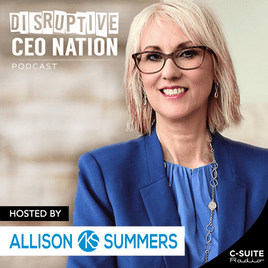Essential Philippines Outsourcing Statistics
For business purposes, the world is becoming increasingly smaller every year. Outsourcing is the best way to remain competitive in any industry, thanks to advances in technology and access to information.
When a company hires workers who are based in a different location, it saves money, grows, and provides better service. Profits could rise as a result of these functional upgrades.
Making decisions based on facts is critical in today’s information-overloaded world. Hence the importance of reviewing these essential Philippines outsourcing stats. You’ll find all the information you need to decide if this is a good fit for your company.
List of Philippines Outsourcing Statistics
Approximately 1.3 million Filipinos are employed by the BPO industry each year, which contributes approximately $30 billion to the global economy, according to Oxford University.
According to the most recent available data, there were over 1,000 BPO firms operating in the previous fiscal year, indicating that annual growth rates are approaching 10%. In the global business process outsourcing market, the Philippines is estimated to hold up to 15 percent of the market.
A small business BPO survey by Clutch found that accounting, IT, and digital marketing were the three most frequently outsourced services for small businesses in 2019. Investments by more than a third of companies are deemed important.
Data mining and input, transcription services, game development, and animation are among the additional options.
According to Aptude, the United States outsources about 300,000 jobs each year, with large corporations investing in BPO at a rate two-thirds higher than that of small businesses. That’s why, according to Statista, the global IT outsourcing market could be worth nearly $400 billion by 2025.
Outsourcing Comes from Everywhere Today
For voice, IT, and BPO, the United States was the primary source of outsourcing opportunities in the past. For the first time in 2019, the Philippines made it into the top ten of AT Kearney’s global metrics list.
A record 14.4 million people were employed by American affiliates abroad in 2018, and that number is expected to keep rising. Job opportunities were found in a variety of industries, including call centers and manufacturing.
Cloud-based technologies have been credited by 68 percent of industry leaders for this growth. For companies that use BPO, single-instance ERP and RPA are also credited as digital enablers.
Additionally, automation is cited as a drawback of technological advancement by Deloitte. Artificial intelligence structures are used by 58 percent of companies that are considering outsourcing.
Despite the fact that automation can result in lower costs, AI still requires human intervention to be set up and monitored. As a result, a human workforce, particularly one with IT training, is still required. A competitive business environment necessitates the use of cost-effective outsourcing options, and the Philippines offers just that.
Recovering from COVID: Philippines Outsourcing
Forbes predicts that remote work will increase by 300 percent in the next few years.. When restrictions on movement are in place, people are more likely to work from home or join the gig economy. Workers, on the other hand, don’t want to lose the happiness and prosperity that have come as a result of this opportunity.
As a result, the BPO sector fared better than the general population during the outbreak. Working from home is more common in the outsourcing industry than in the information and communication industries (9.79%), according to Sprout Solutions.
85 percent of outsourcing opportunities are still coming from the United States, according to Business Process Incubator (BPI). The jobs that aren’t based in the United States tend to come from Australia or the United Kingdom. Employers continue to report a lack of qualified candidates, with 31 percent of companies reporting that they are affected by an employee shortage.
BPI also points out that outsourcing can be a powerful tool in a company’s arsenal, as evidenced by a number of statistics. The relationship between a BPO provider and a global business is viewed positively by 80% of those businesses, while 74% of IT companies outsource processes. Some 59% of businesses still view outsourcing as a way to save money.
Businesses are looking to outsource legal, HR, marketing, and other functions in order to run more efficiently and effectively. Results can be achieved in the Philippines BPO industry, which has the necessary personnel and technology.
Outsourcing Provides Additional Benefits to Consider
Deloitte found that while cost-cutting is back in vogue, there are four other objectives that companies take into account when outsourcing. Some 40% are looking for more flexibility, while another 20% say it helps them get to market faster.
Another 15% of companies told Deloitte that they were able to access better tools and processes as a result of outsourcing. That’s the same percentage of people who prioritized “agility.”
While the Philippines is ranked 27th in the world for English proficiency, it is the second-best option in Asia. With a literacy rate of 98.19 percent and an employment rate of 93.13 percent, the government has full support for outsourcing.
Exceptional customer service is also a hallmark of life in the Philippines. The economy relies heavily on the hospitality industry, so the approach is already customer-centric. These resources can help businesses improve their services while reducing costs. Getting along with other people is referred to as “pakikisama” in the Filipino language.
Financial news outlet Business Mirror reported that the Philippines’ BPO income helped compensate for an initial decline in money transfers due to a pandemic. There will be numerous opportunities to pursue new trends as COVID reaches its endemic stage.
What Trends Will Be Seen in Philippines Outsourcing in the Coming Year?
As the world uses 2022 to push toward normalcy, the emphasis will be on providing an enhanced customer experience.
The focus will be on providing a better customer experience as the world attempts to return to normalcy in 2022.
Companies looked to customer experience (CX) as a way to stand out from the competition before the pandemic. It was demonstrated in 2020 that it could save a company’s life.
Businesses will seek out more outsourcing opportunities as they realize the value of providing a unique customer experience. To put it another way, there are likely more opportunities for benchmarking services, mystery shopping, real-time omnichannel experiences, insight management, and path-to-purchase mapping.
It’s been a rough few months, but things are looking up. As these statistics on Philippines outsourcing demonstrate, all businesses can achieve more while spending less if they adapt to the industry’s new trends and norms.



















